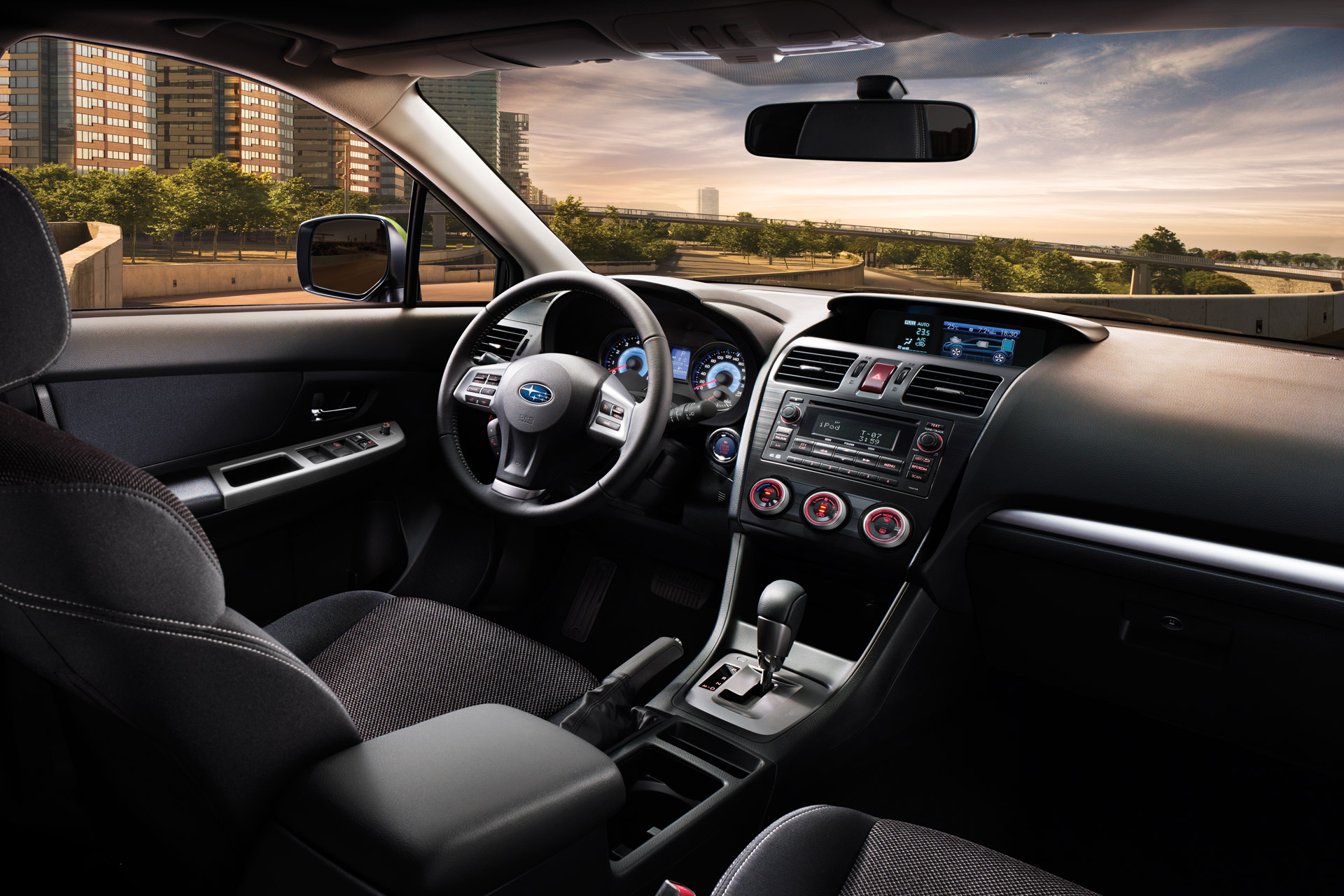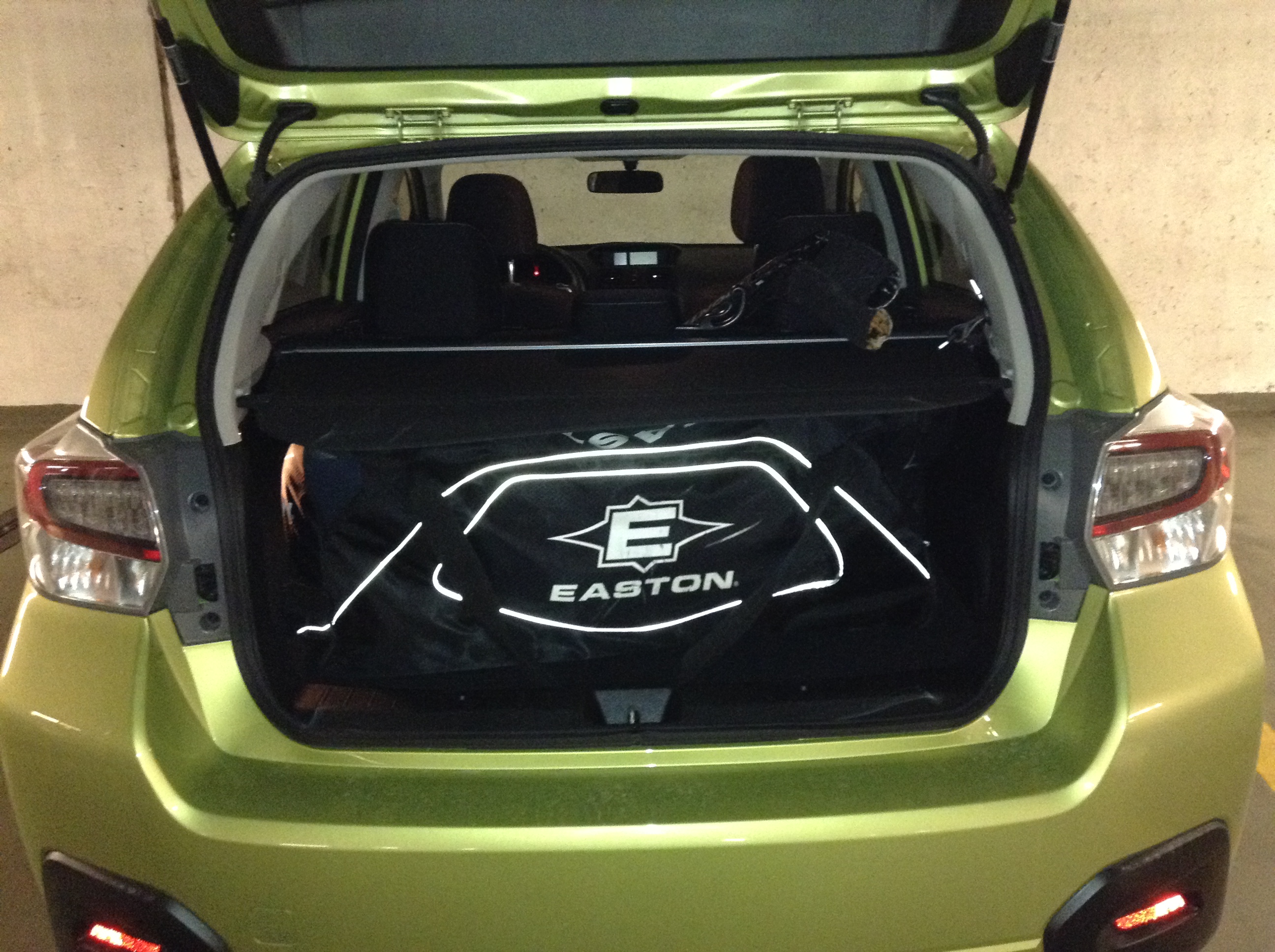Back in July, I spent a week with Subaru’s first hybrid, the Crosstrek XV.
First impressions
My first thought upon picking up the vehicle at Subaru’s Mississauga office? I’ll never lose this thing in a crowded parking lot. The vibrant Plasma Green Pearl exterior paint job is unique to the Subaru XV Crosstrek Hybrid.
The exterior is pleasing enough, not differing from the rest of Subaru’s recently introduced Crosstreks (Touring, Sport and Limited). This compact crossover isn’t a tall vehicle, yet it offers ample ground clearance and a smooth overall ride.
Interior
The interior was surprisingly roomy. I even fit in the back seat without having to tilt my neck or slouch in my seat, and the heated front seats suited me fine, even with the moonroof. When I looked at the vehicle from the side, it seemed as though the seats sit low to the floor. Subaru, tall people everywhere thank you for this.
The cabin isn’t overdone, controls are straightforward and well laid out. My tester didn’t have a touch screen, but there was more than enough stuff to pay attention to (more on that later).

image courtesy Subaru
Suffice it to say the Crosstrek passed the hockey bag test.
On the road
Refined road manners come courtesy of full-time AWD and Vehicle Dynamics Control. The Crosstrek shudders slightly when the gas engine:
- shuts down when the vehicle is stopped
- starts up when you lift off the brake
The Crosstrek Hybrid maximizes fuel economy by killing the 2.0-litre, 148-horsepower boxer engine when it isn’t needed. (This shutting down and starting up is a standard trick on hybrids.)
It also conserves gas via the continuously variable transmission (CVT), which seems to keep the engine purring at just north of 1,000 RPM on city streets during normal driving and between 2,000 and 3,000 RPM on the highway. Step on the accelerator and the CVT transmits engine bursts above 5,000 RPM to all four wheels for passing power aplenty, even on uphill grades.
The boxer engine gets help from a 13.4-hp electric motor during such maneuvers. During more sedate driving, like letting the Crosstrek go down a hill with the foot off the gas, both motors go quiet and the energy from the wheels spinning replenish the hybrid engine’s battery. (Again, kinetic energy regeneration systems (KERS) are commonly found on hybrids.)
Information technology
Subaru lets drivers know what’s going on under the hood via the information screen in the center of the dashboard. The Crosstrek provides plenty of data on that screen, all of which the driver can scroll through using paddles mounted in the lower left quadrant of the steering wheel.
Information on that screen can be taken in during the quickest of glances, so I never found it to be a distraction. Granted, it takes at least a modicum of knowledge of a car’s inner workings to decipher the information, but if you have that, the information makes plenty of sense – and it may be the incentive drivers needs to rein in bad driving habits (jackrabbit starts, needlessly hard braking, etc.).
Some of my favorite readouts included:
- a real-time fuel consumption bar combined with mileage during a particular trip
- the ECO history screen, a bar graph that shows fuel economy in one- two- or three-minute intervals. Yellow bars tell of intervals with poor fuel economy (think uphill stretches or hard accceleration) while green bars represent better-than-average mileage.
An analogue Eco gauge in front of the driver showed moment-by-moment whether I was accomplishing better or worse fuel economy. It’s a vague 1/3 of a circle, showing only unlabeled “notches” to the left and right of a solid line. I found this lack of specific feedback incongruous given the detail I could quickly take in from the main engine performance screen.
The more I used these screens, the more I remembered that they “gamify” good driving habits, and that’s a great thing in my book.
Manual shifting
As in the Subaru Forester I reviewed in 2013, the Crosstrek offers paddle shifters. It’s the same idea: pull the right shifter to shift up a gear, pull the left shifter to shift down a gear.
I wasn’t as eager to work the paddles with the Crosstrek since I couldn’t get the fuel economy numbers using six artificially fixed gears that I got using the CVT in automatic mode. (The information screen on my tester’s 8,200 km told me that the vehicle averaged 7.8 L/100km) Still, it’s the same forgiving manual transmission system, and worth a try for people who never learned to drive manual transmission vehicles of the three-pedal variety.
Quibbles
For some reason, the Crosstrek offers a calendar that one can set to track things like birthdays. In an age of ubiquitous smartphones and the calendar apps they ship with, I found this feature puzzling. (People are more likely to have their phones about them than their vehicles, phone calendar apps are more sophisticated than Subaru’s in-vehicle calendar… I’d wonder if anybody uses Subaru’s “dash calendar.”)
For some reason, I’ve had difficulty in certain vehicles pairing my year-old iPod Touch to the sound system, and the Crosstrek was one of those difficult pairings. It would lose the connection when I shut the vehicle down, so I just plugged it in using a USB connector. And like another car I reviewed, a hard-wired connection provided all my songs, playlists, audiobooks and so forth on the sound system’s screen. I’m looking forward to the day when systems like Subaru’s recognize third-party audio apps, like the public library borrowing app Overdrive.
Conclusion
At a starting MSRP of $29,995, the Crosstrek XV Hybrid was made to fit the lifestyle of the fuel-conscious driver who needs more room than smaller hybrids offer while not wanting to go to an SUV. Think of it as that most practical of vehicles, a mildly oversized station wagon (sorry, compact crossover) that hauls people and their stuff with aplomb.


